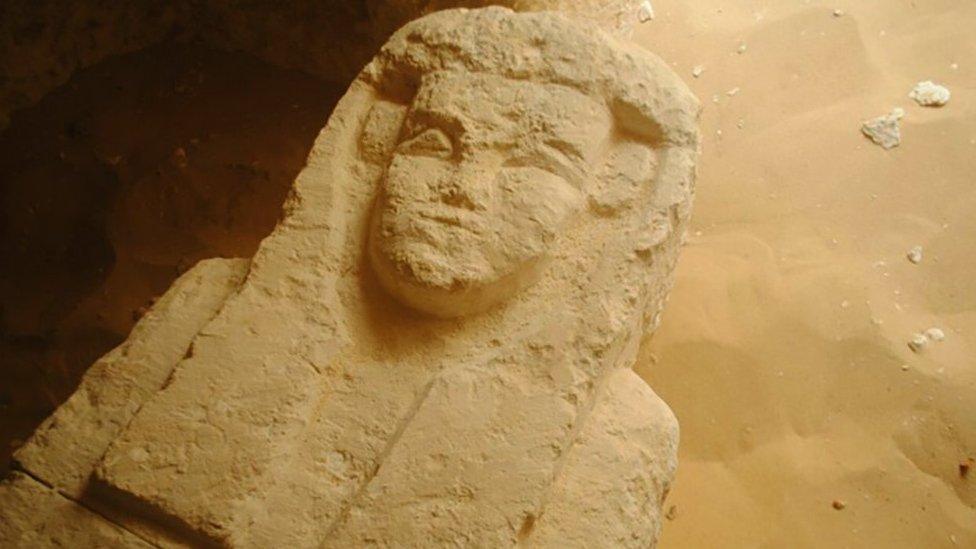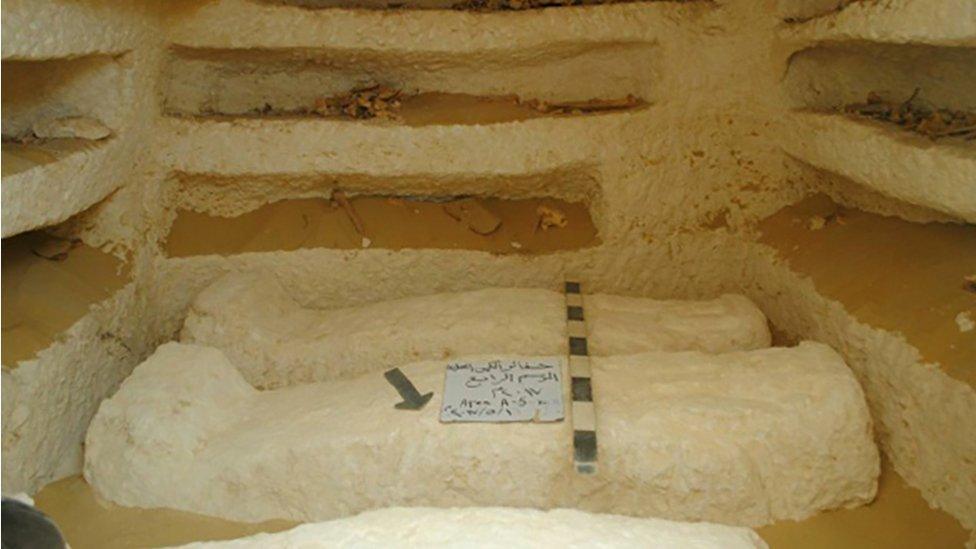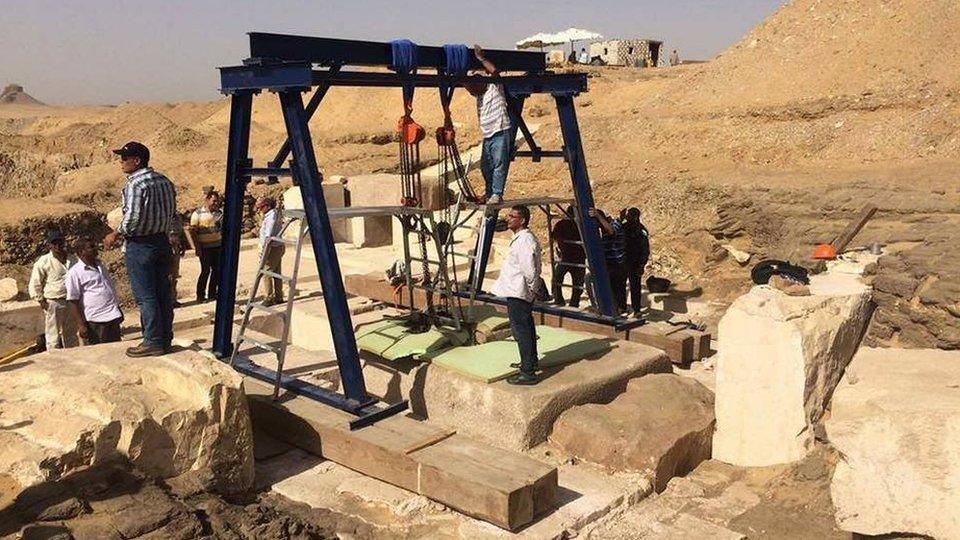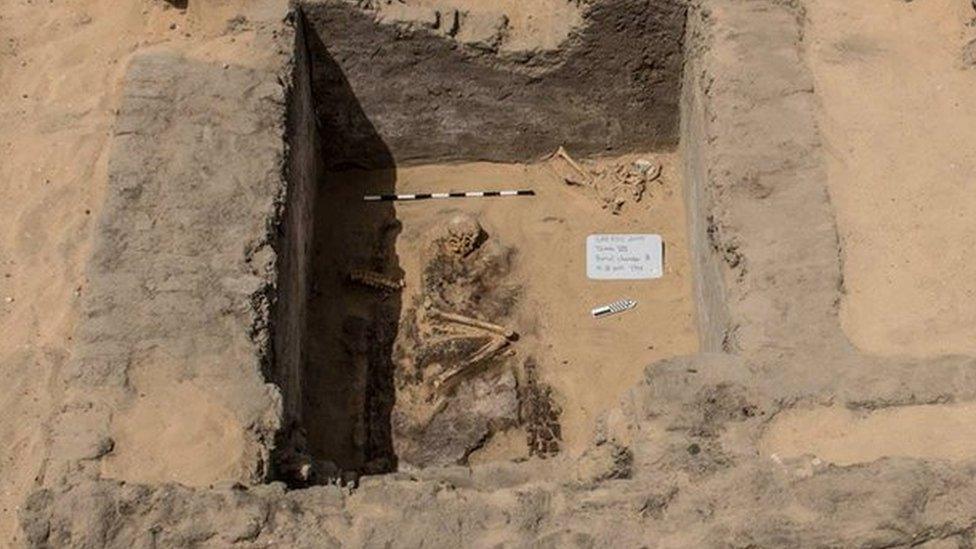Archaeologists discover three ancient tombs in Egypt
- Published

A sarcophagus from one of the three tombs found at burial grounds south of Cairo
Archaeologists have discovered three tombs that date back around 2,000 years in southern Egypt.
They were found in burial grounds in the Al-Kamin al-Sahrawi area in Minya province, south of Cairo.
The tombs contained a collection of different sarcophagi, or stone coffins, as well as clay fragments.
Egypt's antiquities ministry said the discovery "suggests that the area was a great cemetery for a long span of time".
One of the tombs, which was reached through a shaft carved in rock, contained four sarcophagi that had been sculpted to depict a human face.
In another, excavators found six burial holes, including one for the burial of a small child.

Sarcophagi which were discovered in a cemetery dating back about 2,000 years
Clay fragments found at the site date the tombs between the 27th Dynasty, founded in 525BC, and the Greco-Roman era, which lasted between 332BC and the 4th Century.
Ali al-Bakry, head of the mission, said one of the tombs contained bones believed to be the remains of "men, women and children of different ages".
"These tombs were part of a large cemetery for a large city and not a military garrison as some suggest," he said.
In a statement, the antiquities ministry said that "works are under way in order to reveal more secrets".
This work follows previous excavation at the site, which began in 2015.
- Published18 April 2017

- Published11 May 2017

- Published24 November 2016
